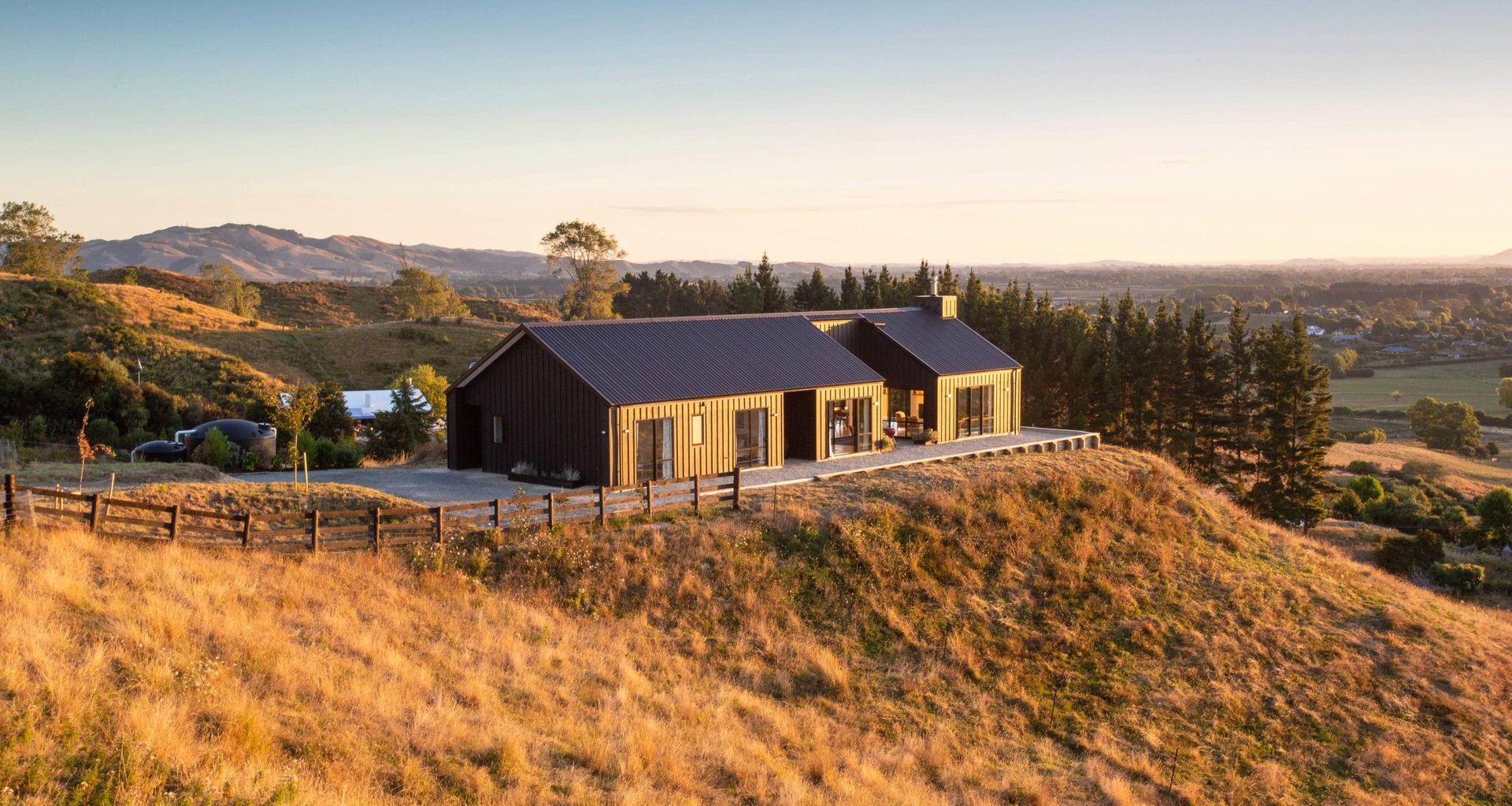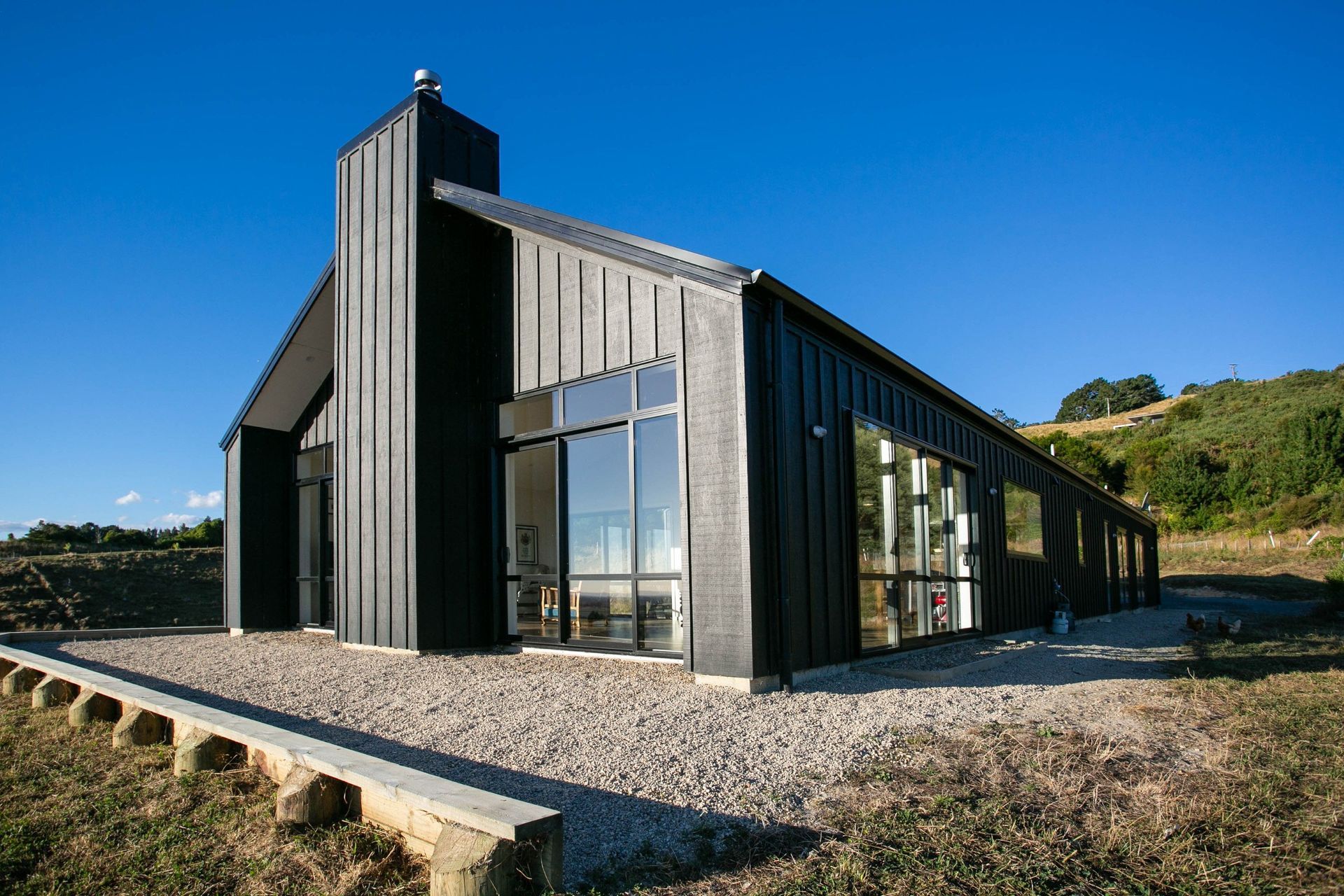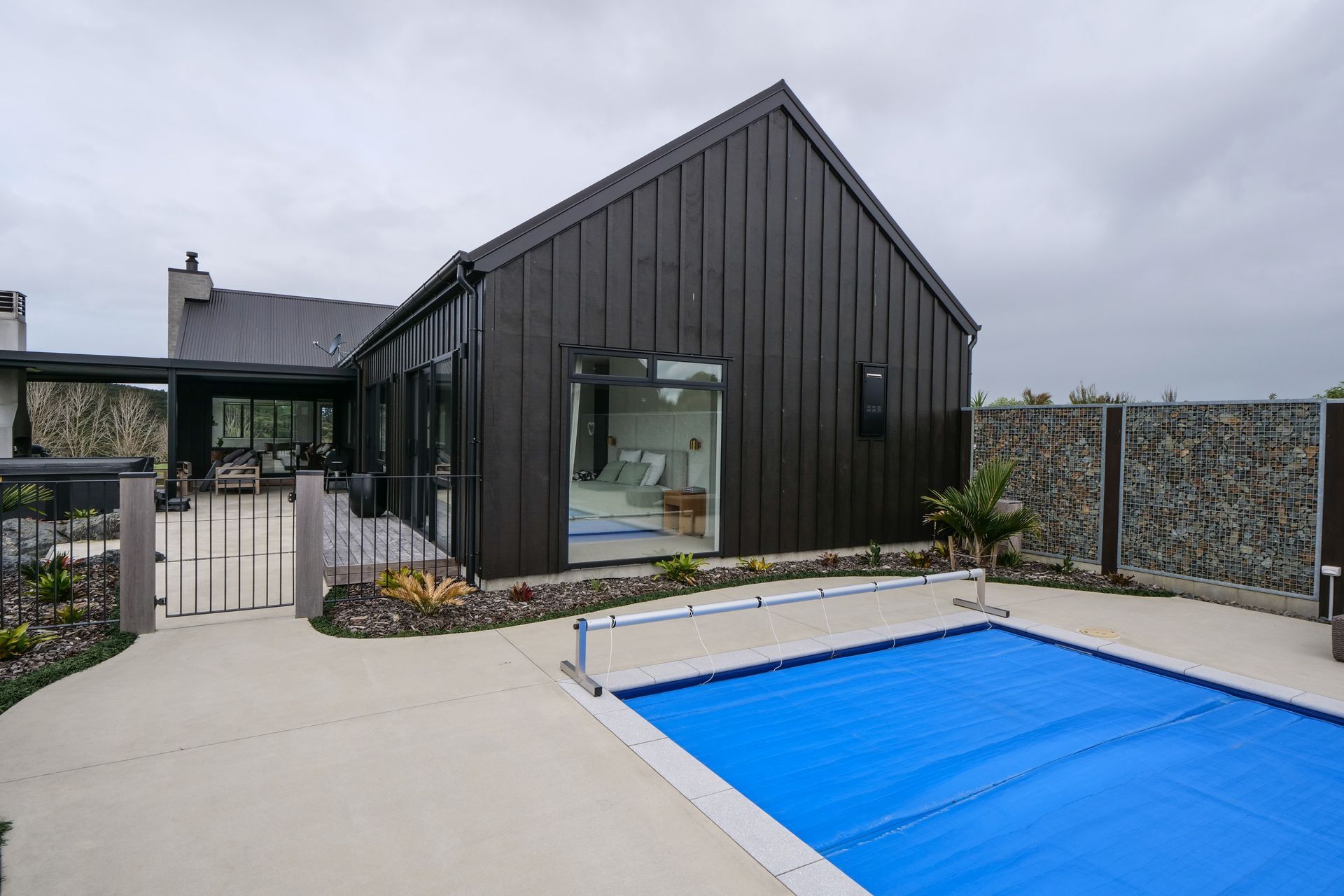A rustic board and batten system designed for New Zealand homes
Written by
28 March 2023
•
3 min read

Originating in Scandinavia, board and batten cladding gained popularity in the mid-19th century as a weather-tight solution for North American colonial buildings. The style, consisting of wide planks of wood applied vertically, with thinner strips laid over the gaps between each plank, has evolved since then — now recreated using plywood or fibre cement for purely aesthetic purposes.
A recent resurgence in rustic, farmhouse-inspired design styles has seen board and batten cladding pop up on homes across New Zealand. While the trend has roots in rural buildings, modern adaptations, like Triclad’s Enduroclad Board and Batten system, lend themselves to a variety of contexts and construction styles.

The Enduroclad Board and Batten system is made from plywood panels and pine battens, yet it is unique from other plywood products in length.
“These days, very few houses have a 2.4 metre stud. Many have anything from 2.7, to three metres and beyond,” says Triclad Sales and Marketing Manager, Dave Garmonsway.
“If you’re cladding a home with standard plywood panels, you’ll need to use a metal flashing right across the face of the wall to connect the two plywood panels so you can reach that height.”
While practical, the metal flashing is not particularly appealing to the eye. To resolve this issue, Triclad uses a tongue and groove join to seamlessly connect two panels of ply, achieving the appearance of a single sheet.
“We join the sheets at our factory here in Hamilton to create a board that can be customised in 300mm increments up to 7.2 metres, so there's no need to have a metal flashing going through the middle of your beautiful wall,” Garmonsway says.

The plywood sheeting used in the Enduroclad system is manufactured by local plywood mill IPL and is made from radiata pine sustainably grown across the South Island. Once felled, the pine is taken to the IPL mill in Gladstone, just south of Greymouth. The manufacturing process is designed to be as close to zero waste as possible, with fence posts and packaging supports made from the core of the pine logs, and wood chip off-cuts used as biofuel to power the factory.
Tested against the wild weather conditions of the South Island’s West Coast, the plywood is designed for New Zealand’s climate — and New Zealand’s architectural design standard, due to its high-quality finish.
To replicate the traditional look, Enduroclad boards and battens have a bandsawn face that when finished with paint, achieves the perfect balance of rustic charm and modern minimalism.

Current cladding trends favour darker colours, which Garmonsway says is achievable with Enduroclad. Black paint is known to be problematic as it can cause warping and cupping on cladding materials that aren’t temperature stable, however, with Enduroclad those risks are low. Still, Garmonsway notes, it is important to recognise that darker colours require more maintenance than lighter colours, and homeowners should factor that in when choosing a palette for their home.
Learn more about Triclad and the Enduroclad Board and Batten System.